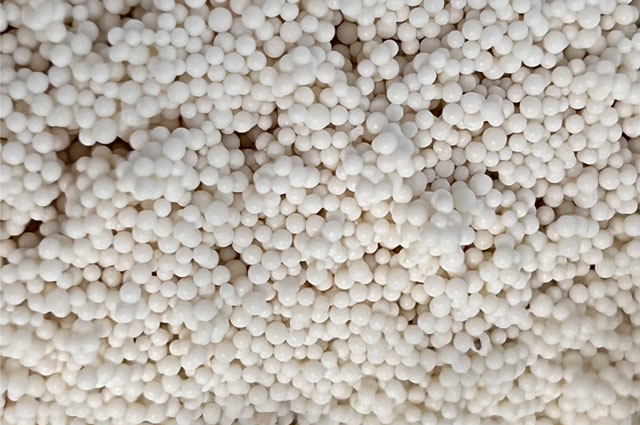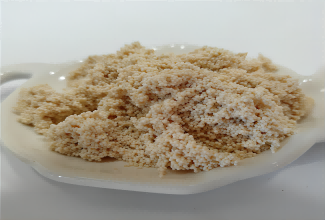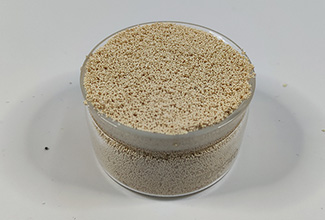How Do You Make Citrus Less Bitter?
Challenges of Citrus Bitterness to the Food Industry
In the food industry, citrus products are popular among consumers due to their fresh fruity flavor and rich nutrition. From common fruit juices and jams to a variety of citrus-flavored beverages, citrus has become an important raw material for the food industry. However, the problem of citrus bitterness has been a major issue, greatly affecting product quality and market performance.
For consumers, an overly strong bitter flavor in a product can significantly reduce the taste experience and directly affect their acceptance of the product. If consumers experience unpleasant bitter flavors when drinking juice or consuming jam, not only is the immediate consumption experience greatly reduced, but also the brand's impression is negatively impacted, which in turn reduces the willingness to repurchase. This undoubtedly poses a serious threat to food manufacturers' long-term marketing strategies and customer loyalty.
In terms of traditional de-bittering methods, activated carbon adsorption, for example, can adsorb bitter substances to a certain extent, but this method is inefficient. The use of a large amount of activated carbon not only increases production costs, but also adsorbs some of the flavor substances in the juice, resulting in a loss of product flavor and making it difficult to restore the natural flavor of citrus itself. In addition, the cumbersome follow-up treatment of activated carbon further pushes up the cost. Therefore, the development of efficient, scalable and flavor-preserving de-bittering technology has become the key to improve product quality and profitability in the food industry.
Chemical Mechanisms and Industrial Implications of Citrus Bitterness
Analysis of Bitter Compounds
Naringin: Naringin belongs to the class of flavonoids, which consists of naringin, the core structure of flavonoids, and a glucose molecule linked by a glycosidic bond. Its molecular formula is \(C_{27}H_{32}O_{14}\) and molecular weight is \(580.53\). The molecular structure of naringin is relatively stable, but during processing, such as the juicing process, the cellular structure is disrupted and naringin, which was originally present in the cellular vesicles, is released and comes into contact with the oral taste receptors, resulting in a bitter taste.
Limonin: Limonin is a class of tetradown triterpenoids with a \(17β\) -furan ring, molecular formula \(C_{26}H_{30}O_{8}\), molecular weight \(470.53\). It is widely found in citrus fruits, especially in the highest concentration in the seeds. Lemon bitterin in pure form is white, bitter tasting and crystalline . During processing and storage, the precursor substances of lemon bitterin undergo a series of chemical reactions and are eventually converted to lemon bitterin, which leads to enhanced bitterness.
Influence of processing links on the release of bitter flavor: During citrus processing, several links will affect the release and conversion of bitter substances. For example, when the cells are broken during juicing, bitter substances are released from the cells into the juice; in acidic environments, such as some citrus juices with low \(pH\) values, the hydrolysis of naringin and citrulline will be accelerated, resulting in an enhanced bitterness; during sterilization, high temperatures may lead to changes in the structure of the bitter substances, which will further affect the intensity of the bitterness. In addition, during product storage, the bitter substances may undergo slow chemical reactions over time, leading to a gradual increase in bitterness.
Commercial Costs
Bitterness issues place significant commercial cost pressures on citrus product manufacturers. According to industry research data, product returns have risen due to bitterness, with some companies experiencing return rates as high as [X]%. Returns not only cause direct product losses, but also increase additional costs such as logistics and inventory management. At the same time, the bitterness problem makes the products less competitive in the market, and consumers are more inclined to choose similar products without bitterness or lighter bitterness, which leads to the shrinkage of the market share of the enterprise, and in order to recover the market, the enterprise often needs to invest more money for marketing and product improvement, which further compresses the profit margin.
In-Depth Comparison Of Industrial Grade De-Bittering Technology
Naringinase Application
Principle: Naringinase is mainly used to hydrolyze naringin into rhamnose and naringenin-7-glucoside, which are almost tasteless, so as to achieve the purpose of reducing the bitterness. Naringinase specifically recognizes the glycosidic bonds in the naringenin molecule and cuts them off, resulting in the conversion of the bitter substance.
Limitations:
Reaction conditions are stringent: naringinase activity requires strict control of the \(pH\) value and temperature of the reaction system. Usually, its optimal \(pH\) value is in [specific range], and the optimal temperature is in [specific range], once the \(pH\) value or temperature deviates from this range, the enzyme activity will be greatly reduced, or even inactivated, which puts forward a very high demand on the process control in the industrial production, and increases the operation difficulty and cost.
Residual enzyme affects flavor: After the reaction, the residual naringinase may continue to act on other components in the juice, affecting the flavor of the product. Therefore, it is often necessary to carry out secondary filtration and other treatments to remove the residual enzyme, but this adds to the production process and costs, and the secondary filtration process may lead to partial loss of juice.
Membrane Filtration (Ultrafiltration/Nanofiltration)
Principle: Membrane filtration technology is based on the pore size of the membrane to achieve the separation of bitter molecules. Ultrafiltration membranes generally have a pore size of \(0.001 - 0.1\) microns, while nanofiltration membranes have an even smaller pore size of \(0.0001 - 0.001\) microns. By choosing the right pore size membrane, it is possible to retain bitter substances with large relative molecular mass, such as naringin, while allowing small molecules of nutrients and flavor substances in the juice to pass through, thus achieving the purpose of removing bitterness.
Limitations:
Membrane Contamination Problem: In practical industrial applications, membranes are susceptible to contamination by impurities such as proteins, polysaccharides, and colloids in fruit juices, resulting in decreased membrane flux and reduced filtration efficiency. In order to maintain the performance of the membrane, frequent cleaning and maintenance is required, which not only increases the cost of using chemical cleaning agents, but also leads to production interruptions due to downtime for cleaning, reducing production efficiency and increasing overall operating costs.
Incomplete retention of small molecule bitter substances: For some small molecule bitter substances, such as lemon bittern, its molecule is relatively small, membrane filtration technology is difficult to completely retain it. Even if the nanofiltration membrane with smaller pore size is used, some lemon bitters may still enter the product through the membrane, resulting in unsatisfactory de-bittering effect.
Ion Exchange Resin Adsorption Technology
Technical principle:
Selective adsorption: Ion exchange resin has specific functional groups on the surface, which can have electrostatic attraction with the bitter substances with opposite charge. Naringin and lemon bittern in certain conditions with a negative charge, and ion exchange resin functional groups can selectively adsorb these negatively charged bitter molecules. For example, the quaternary ammonium group in the functional group of the strongly basic anion exchange resin can have an exchange reaction with the anion of the bitter substance and adsorb the bitter substance onto the surface of the resin.
Dynamic adsorption - desorption process: In industrial production, dynamic adsorption is usually used, i.e., the juice is continuously passed through the adsorption column containing the ion exchange resin. During the adsorption process, the bitter substances are continuously adsorbed by the resin, and the bitter flavor in the juice is gradually reduced. When the resin adsorption is saturated, the resin is eluted by a specific eluent, so that the bitter substances are desorbed from the resin to realize the regeneration of the resin. At the same time, the eluted resin can be reused in the adsorption process, realizing continuous production.
Competitive Advantage:
High Efficiency: According to the third party experimental data, the ion exchange resin is able to reduce \(90\%\) or more of the bitter components in the fruit juice in a single treatment. Compared with other de-bittering technologies, it can improve the product's bitterness problem more significantly and enhance the product quality.
Precision: Unlike the random adsorption of activated carbon, ion exchange resin can accurately adsorb bitter substances, and has almost no adsorption effect on the vitamin \(C\), flavor substances and other beneficial ingredients in the juice, preserving the nutritional value and original flavor of the product to the maximum extent, so that the consumer can taste the more pure citrus flavor.
Economical: The ion exchange resin has good regenerability and its adsorption performance remains stable after several adsorption-desorption cycles. Under normal circumstances, the resin can be recycled thousands of times, greatly reducing long-term use costs. Compared with enzymatic and membrane filtration technologies, ion exchange resin technology has obvious cost advantages in long-term operation.
Application Scenario:
Fruit Juice Concentrate Bitterness Removal: For fruit juice concentrate producers, ion exchange resin technology can effectively remove bitter substances before concentration, avoid further concentration of bitterness during the concentration process, ensure that the fruit juice concentrate products have a good taste, and satisfy consumers' demand for high quality fruit juice concentrates.
Citrus flavored beverages: In the production of citrus flavored beverages, the use of ion exchange resins to treat the raw fruit juice ensures that the beverages have a strong citrus flavor without any obvious bitterness, which improves the overall taste of the beverages and enhances the competitiveness of the products in the market.
Jam / pectin production: In the process of jam and pectin production, removing the bitterness of raw materials through ion exchange resins can improve the flavor of the product, improve product quality, and at the same time, avoid the impact of bitterness on the gel properties of pectin and other quality indicators.
Recommended food-grade macroporous resin models, such as DA860 high adsorption capacity resin. This type of resin has a large specific surface area and rich pore structure, which can provide more adsorption sites, and has a very high adsorption capacity for bitter substances such as naringin and citrinin. Meanwhile, its chemical stability is good, and it can operate stably in the food processing environment, and it meets the food-grade safety standards to ensure product quality and safety.
Technology Comparison Table
Indicators Ion Exchange Resin Enzymatic Processing Membrane Filtration
|
Indicator |
Ion Exchange Resin |
Enzymatic Method |
Membrane Filtration |
|
Debittering Efficiency |
★★★★★ |
★★★☆☆ |
★★★★☆ |
|
Operational Cost |
★★★★☆ |
★★☆☆☆ |
★★★☆☆ |
|
Flavor Retention |
★★★★★ |
★★★☆☆ |
★★★★☆ |
|
Scalability for Mass Production |
★★★★★ |
★★★☆☆ |
★★★★☆ |
Industry Application Cases and Data Verification
After a global fruit juice brand adopted ion exchange resin, the complaint rate of the customers decreased by 60%. A global fruit juice brand adopts ion exchange resin, the customer complaint rate dropped by 60%
A global famous fruit juice brand has long been plagued by the problem of product bitterness, and the customer complaint rate remains high. After adopting ion exchange resin technology to improve its fruit juice production process, it has achieved remarkable results. Through market research on the products before and after the treatment, it was found that the customer complaint rate dropped from [X]% to [X]%, a reduction of up to \(60\%\). This data shows that ion exchange resin technology can effectively solve the problem of fruit juice bitterness, significantly improve consumer satisfaction, and enhance the brand's reputation and competitiveness in the market.
Pectin Producer Reduces Bitterness Masking Agent Usage Through Resin Technology, Saving $200K annually
A pectin producer, in the past production process, needed to use a large amount of bitterness masking agent in order to mask the bitterness in the product, which not only increased the production cost, but also had a certain impact on the flavor of the product. After the introduction of ion exchange resin technology, the bitter taste of the product has been effectively removed, and the amount of bitter masking agent has been greatly reduced. After calculation, the enterprise saves up to \(200K\) USD per year by reducing the use of bitter taste masking agent. At the same time, the quality of the product was improved, and it gained a higher price advantage in the market, further increasing the profit of the enterprise.
KEY CONSIDERATIONS FOR IMPLEMENTING ION EXCHANGE RESIN TECHNOLOGY
Process Integration
Integration with Existing Production Lines: The pretreatment - adsorption - regeneration module needs to be carefully designed when introducing the ion exchange resin technology into an existing production line. The pre-treatment module focuses on pre-treatment of the juice such as filtration and pH adjustment to ensure that the juice meets the adsorption requirements of the resin and to minimize the contamination of the resin by impurities. Adsorption module according to the production scale and juice flow, reasonable selection of adsorption column specifications and number, to ensure that the juice and resin full contact, to achieve efficient adsorption. The regeneration module needs to design suitable eluent formula and elution process to ensure that the resin can be effectively regenerated, while the elution waste liquid is properly treated to avoid environmental pollution.
Automated control of resin regeneration cycle: In order to reduce downtime and improve production efficiency, an automated control system can be used to monitor the adsorption state of the resin, and according to the resin adsorption amount and the concentration of bitter substances in the juice and other parameters, automatically determine the timing of resin regeneration, and start the regeneration process in a timely manner. Through automated control, accurate regeneration can be realized, avoiding the decrease of production efficiency and product quality fluctuation caused by excessive adsorption or untimely regeneration.
Compliance and Safety
FDA/EC 1935 Approval for Resins: Ion exchange resins used in the food industry must meet strict food safety standards. For example, obtaining U.S. Food and Drug Administration (FDA) approval and European Union EC 1935 certification ensures that the resin will not release hazardous substances during contact with food, posing no risk to product quality or consumer health.
Eco-friendly recycling process without chemical solvents: With the increasing awareness of environmental protection and the promotion of the concept of sustainable development, it has become a trend to adopt eco-friendly recycling process without chemical solvents. For example, biological regeneration technology or gentle physical regeneration methods can be utilized to ensure resin regeneration results while reducing the use of chemical solvents, lowering the impact on the environment, and meeting the ESG (Environmental, Social and Corporate Governance) objectives of the enterprise.
Future Trends and Innovations
Resin Technology Upgrade: Hybrid Function-Based Resins Target Adsorption of Specific Bitter Molecules
In the future, ion-exchange resin technology will evolve in a more precise direction. The future of ion exchange resin technology will move in the direction of greater precision. Hybrid functional resins will be developed so that they can simultaneously possess a variety of functional groups, enabling more efficient and precise target adsorption of specific bitter molecules, such as naringin and citrulline. This resin can selectively bind to bitter substances according to their molecular structure characteristics, further improving the de-bittering efficiency while reducing the impact on other ingredients, providing better de-bittering solutions for the food industry.
Circular Economy: Recovering Naringin from Waste Liquid for Pharmaceutical Ingredients (Value-added Benefits)
During citrus processing, the waste liquid generated usually contains a certain amount of bitter substances such as naringin. In the future, companies can recover naringin from waste liquids through innovative technological means. Naringin has certain medicinal value, such as in anti-cancer, anti-inflammatory and other aspects of the research shows potential activity . Selling the recovered naringin as a pharmaceutical raw material not only realizes the recycling of resources and reduces waste emissions, but also brings additional value-added benefits to the enterprise, realizing a win-win situation in terms of economic and environmental benefits.
FAQS
Q1: Will the resin treatment change the pH value or color of the juice?
A: After being treated with food grade resin, the \(pH\) fluctuation of the juice is less than \(0.3\), which is within the normal acceptable range and has no obvious effect on the taste of the juice. Meanwhile, through professional testing instruments and sensory evaluation, the results show that there is no visible change in the color of the juice. [Here you can attach relevant test data charts to enhance the persuasive power]
Q2: Resin life and replacement cost?
A: Under normal use, the ion exchange resin can be recycled more than \(3000\) times. For example, for each ton of juice treated, the cost per treatment is less than \(0.5\) USD. As the number of times of use increases, the performance of the resin may decrease to a certain extent, but through reasonable maintenance and regeneration process, it can effectively extend the service life of the resin, reduce the replacement cost, and ensure a good economy in long-term operation.
-
 Uranium Extraction Ion Exchange ResinPhysical Form: Opaque beadsIonic form: SulfateTotal Exchange Capacity (Cl− form) mmol/ml: ≥1.30
Uranium Extraction Ion Exchange ResinPhysical Form: Opaque beadsIonic form: SulfateTotal Exchange Capacity (Cl− form) mmol/ml: ≥1.30 -
 Copper Removal ResinPurity:99.9%Appearance:Milky to light yellow opacity spherical beadsMoisture content (%):48.00-60.00
Copper Removal ResinPurity:99.9%Appearance:Milky to light yellow opacity spherical beadsMoisture content (%):48.00-60.00 -
 Chelating Resin for Precious Metals RecoveryAppearance: Milky to light yellow opacity spherical beadsIonic form:Na+Volume complete exchange capacity(mmol/ml):≥2.0
Chelating Resin for Precious Metals RecoveryAppearance: Milky to light yellow opacity spherical beadsIonic form:Na+Volume complete exchange capacity(mmol/ml):≥2.0

